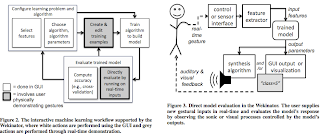Paper Reading #32: Taking advice from intelligent systems: the double-edged sword of explanations

Reference Authors: Kate Ehrlich, Susanna Kirk, John Patterson, Jamie Rasmussen, Steven Ross, Daniel Gruen Affiliation: IBM Research, 1 Rogers St, Cambridge, MA 02142 Presentation: IUI 2011, February 13–16, 2011, Palo Alto, California, USA. Summary Hypothesis Research on intelligent systems has emphasized the benefits of providing explanations along with recommendations. But can explanations lead users to make incorrect decisions? This paper explored this question in a controlled experimental study with 18 professional network security analysts doing an incident classification task using a prototype cyber security system. It further addresses the role of explanations in the context of correct and incorrect recommendations, in a mission- critical setting. Methods Nineteen analysts with minimum of three years experience participated in the study on the effects of a user's response to a recommendation made by an intelligent system . Following the training, analysts ...










